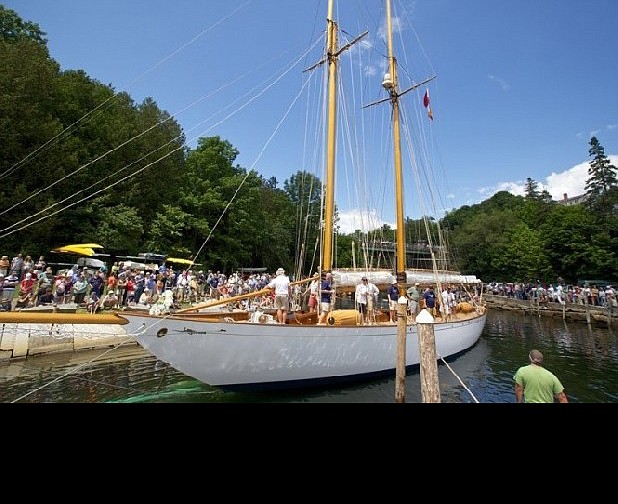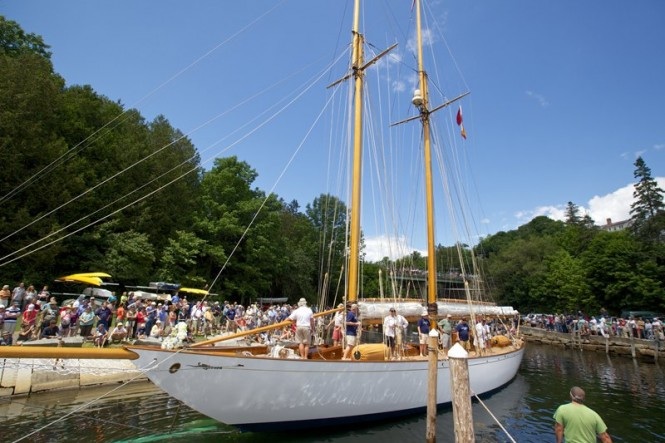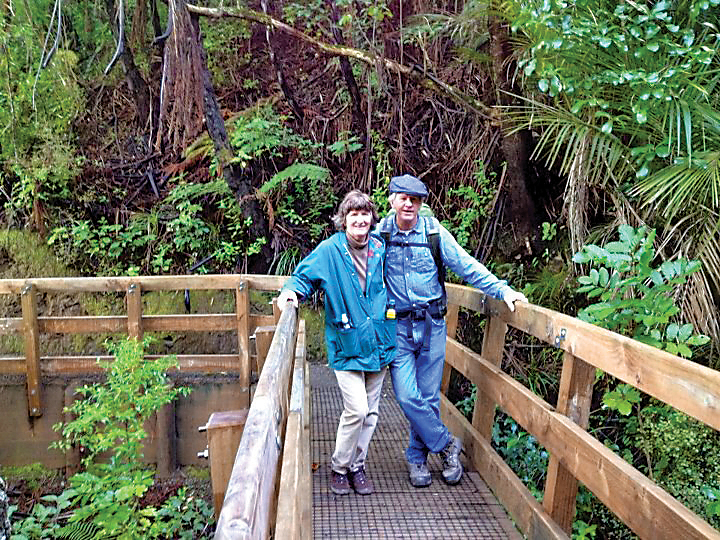ONLINE
• Read comments on a sailing forum about the missing schooner Nina at www.cruisersforum.com/forums/f121/schooner-nina-merged-3-threads-105498.html
Rescue crews searching for a classic American schooner carrying seven people believe the boat sank between New Zealand and Australia, although they haven't given up hope of finding survivors.
A Chattanooga woman who's the fraternal twin of the captain of the Nina thinks the 1929 racing schooner may be limping along slowly toward Australia -- undetected by searchers scouring the vast Tasman Sea that separates the two countries.
"We haven't given up hope," said Cherie Martinez, whose brother, David Dyche, 58, is a lifelong sailor. "We think the boat was damaged, and because they [had battery failure] they can't tell us that."
A third day of aerial searches Friday turned up no sign of the 85-year-old wooden sailboat or its crew. The boat left New Zealand on May 29 bound for Australia. The last known contact with the crew was on June 4.
Rescuers were alerted the boat was missing on June 14, but weren't unduly worried at first because the emergency locator beacon had not been activated.
The six Americans on board include Dyche, his wife, Rosemary, 60, and their son David, 17. Also aboard was their female friend Evi Nemeth, 73, who's a retired University of Colorado computer engineering professor, a man, 28, a woman, 18, and a British man, 35.
The leader of Friday's search efforts, Neville Blakemore of New Zealand's Rescue Coordination Centre, said it's now logical to assume the boat sank in a storm but added that it's possible some crew members survived either in the life raft that was aboard or by making land.
On the day the boat went missing, a storm hit the area with winds gusting up to 68 mph and waves of up to 26 feet.
Martinez said the vintage schooner had survived storms before.
"That boat's taken a lot of damage, but it's always limped back to port," she said. "The thing is born to sail."
Sailing forum offers hope
Martinez has been in contact with the New Zealand searchers via email.
She also has been communicating -- including with other family members of those missing on the Nina -- on crusiersforum.com, a website that she describes as a sort of a Facebook for the sailing community.
Comments left there have buoyed her hopes.
For example, her heart sank when she heard a Lockheed P-3 Orion, a four-engine turboprop aircraft built for anti-submarine surveillance, had searched 650,000 square miles of the Tasman Sea.
"I thought, 'Oh my gosh, that's a lot of miles,'" she said.
Martinez felt better when she said a commenter wrote, "That's nothing. The Tasman Sea is huge. They probably only did a third."
Martinez helped trigger the search for her brother's ship when she logged on the forum as "Friend of Nina." She gave the date that the ship left New Zealand and asked, "When should I start to worry?"
Martinez stumbled over the website when, worried at not hearing from her brother, she Googled to learn what the distance was between New Zealand and Australia.
Nemeth's son contacted Martinez through the forum, and he was the one who contacted searchers in New Zealand, Martinez said.
New Zealand's June winter storms
Blakemore said the Southern Hemisphere winter months tend to produce the year's worst storms, although he added that he wouldn't normally expect a sturdy and well-maintained craft like the Nina to sink in a storm like the one in early June.
The only reason the Nina left when it did, Martinez said, is that it was delayed because it had a new engine installed.
"If everything had been working OK, they would have left five weeks earlier," she said.
Friday's search focused on the coastline around northern New Zealand, including the small Three Kings Islands. Rescuers were looking for wreckage or the life raft.
Blakemore said plane searches earlier this week covered a wide band of ocean between New Zealand and Australia. He said searchers were considering their options for the weekend.
He said the logical conclusion is that the boat sank rapidly, preventing the crew from activating the locator beacon or using other devices aboard, including a satellite phone and a spot beacon. He said that unlike many locator beacons, the one aboard the Nina is not activated by water pressure and wouldn't start automatically if the boat sank.
Dyche is a qualified captain, and he and his family are experienced sailors. Blakemore said the family had been sailing around the world for several years and was often joined on different legs by friends and sailors they met along the way.
Martinez said her brother worked as the commercial captain of a boat that handles anchors for oil rigs and tows oil platforms.
"It's like an oversized tug boat," she said.
Their father was in the marine construction business, she said, and also worked as a treasure diver.
"[Sailing] bit my brother young," said Martinez, who's a captain for United Airways. "I'm an airline captain, and he's a ship's captain."
New Zealand meteorologist Bob McDavitt was the last person known to have been in contact with the schooner, when the boat was about 370 nautical miles west of New Zealand.
He said Nemeth called him by satellite phone on June 3 and said, "The weather's turned nasty. How do we get away from it?"
He advised them to head south and brace for the storm.
The next day he got a text message, the last known communication: "ANY UPDATE 4 NINA? ... EVI"
McDavitt said he advised the crew to stay put and ride out the storm another day. He continued sending messages the next few days, but didn't hear back. Friends of the crew got in touch with McDavitt soon after that, and then alerted authorities.
Martinez, who's lived in Chattanooga since 1996, just returned Friday from a 10-day visit with her mother in West Palm Beach, Fla.
They're hanging onto hope that the Nina, whose racing history includes a 1928 victory in a 3,900-mile race from New York City to Spain, is afloat and its crew has adjusted to a lack of batteries, engine and other modern technology by relying on a sextant to navigate and wind for sail power.
"We're in a state of disappointment, but still hope," she said. "That hope is a lifeline."
Times Free Press staff writer Tim Omarzu contributed to this report.


